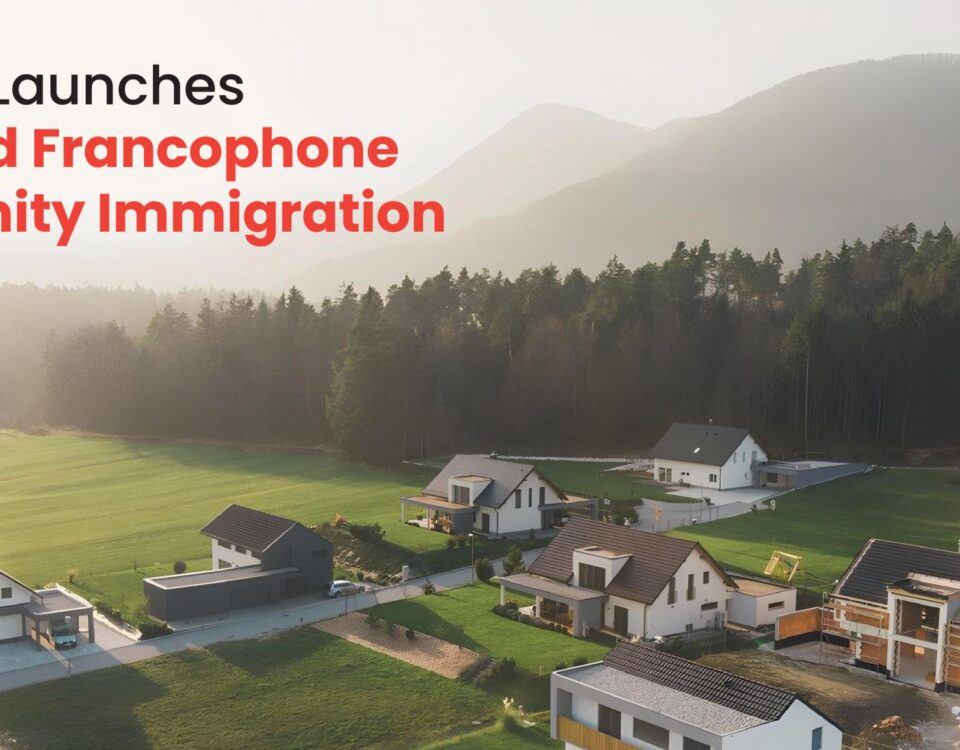The Canadian Government has been making intense efforts to build a stronger immigration system aimed at securing its people, families, and communities. The motive behind this initiative lies in supporting the global talent race, which in turn bolsters the country’s economy. Due to this, the Canadian government has been moderating its immigration numbers to match its processing capacity. Currently, there are approximately 2,220,000 applications in the IRCC inventories, with 878,400 still in backlog.
Additionally, a recent Leger poll revealed that 63% of Canadians want the federal government to limit immigration, citing the country’s current incapacity to integrate newcomers. On the other hand, 37% voted to prioritize increased immigration as it is key to supporting Canada’s growing economy. Developments like these reflect why the Canadian Government is taking steps towards setting realistic expectations regarding its immigration numbers.
Recent Changes and Their Implications
For the year 2023, Canada targeted 465,000 new permanent residents, increasing to 485,000 by 2024 and leveling out at 500,000 in 2025 and 2026. This means that in coming years 98% of Canada’s population increase will be made up of immigrants. However, this does not come without its challenges. This influx has resulted in acute housing shortages and strains on healthcare and infrastructure – all critical issues that are slowly shifting the public and policy towards sustainability and integration.
Strategies to Control Immigration: Marc Miller’s Approach
Marc Miller, the current Minister of Immigration, has introduced several strategies to manage the number of immigrants. These include:
- Setting Targets for Temporary Residents: For the first time, Canada is setting targets for temporary residents, aiming to bring their percentage down from 6.2% to 5% over the next three years.
- Review and Reform of Programs: The government is reviewing the Post-Graduation Work Permit (PGWP) program and Express Entry programs to align it better with labor market needs and regional goals Further, to address the problem of operational processing capacity, backlogs and technological improvements, IRCC has hired 1200 officers during 2022-2023.
- Enhanced Verification Processes: To combat fraud and ensure genuine applications, a new Letter of Acceptance (LOA) verification system for study permits has been introduced.
- Digital Transformation: Increased use of AI and technology aims to reduce processing times and improve the immigration experience. For example, using Advance Analytics to ensure there is no built-in-bias when processing applications.
- Recognized Employer Pilot: Launched on August 8, 2023, the Recognized Employer Pilot streamlines the Labour Market Impact Assessment (LMIA) process for repeat employers meeting compliance standards in occupations with labor shortages, enhancing protections and compliance for foreign nationals under the Temporary Foreign Worker Program (TFWP).
Immigration Pathways: What Options You Have?
Potential Immigrants must understand the available immigration pathways and their requirements.
Popular Immigration Programs
Express Entry: This is a points-based system targeting skilled workers. It has three subcategories:
- Federal Skilled Worker Program,
- Federal Skilled Trades Program, and
- Canadian Experience Class.
Only candidates with highest ranks are invited to apply for permanent residency here, therefore the competition gets fierce for these streams. Before you apply you must follow a step-by-step guide to creating an express entry profile. It will allow you to proactively prevent any mistakes.
Provincial Nominee Program (PNP): Each Canadian province and territory (except Quebec) has its own PNP that allows them to nominate individuals who wish to immigrate to Canada and are interested in settling in a particular province. These programs are also invitation based.
Family Class Sponsorship: Through this program, Canadian citizens and permanent residents can sponsor their spouses, common-law partners, dependent children, parents, and grandparents to immigrate to Canada as permanent residents. It has myriad number of rules and regulations, hence it is recommended to go through them in advance to understand them completely.
Lesser-Known Programs
These programs have less competition and might be your best chance to immigrate to Canada, if relevant to your work experience or skills in any way.
1. Atlantic Immigration Program: The Atlantic Immigration Program targets skilled workers and international graduates who want to work and live in one of Canada’s Atlantic provinces: Newfoundland and Labrador, Prince Edward Island, Nova Scotia, and New Brunswick.
Eligibility: To be eligible, you need a job offer from a designated employer in the Atlantic region. You must also meet education and work experience requirements, language proficiency in English or French, and proof of settlement funds.
2. Rural and Northern Immigration Pilot: The RNIP aims to attract skilled workers to smaller communities across Canada. It helps these communities benefit from economic immigration by filling local labour shortages.
Eligibility: Applicants will require a full-time, permanent job offer from an employer in a participating community. You also have to meet community-specific eligibility criteria, secure a community recommendation, and show proof of settlement funds.
3. Agri-Food Immigration Pilot: This pilot addresses labour shortages in the agri-food sector, including industries like meat processing, mushroom production, and greenhouse crop production.
Eligibility: At least one year of full-time, non-seasonal work experience is required in an eligible agri-food occupation. Applicant should have a job offer from a Canadian employer, high school education, meet language requirements (CLB/NCLC 4), and show proof of settlement funds.
4. Economic Mobility Pathways Project: The EMPP combines refugee resettlement and economic immigration. It allows skilled refugees to come to Canada as economic immigrants.
Eligibility: The criteria of an existing economic immigration program (e.g., Federal Skilled Worker Program or PNP) must be met. This program targets skilled refugees with high education and work experience that is in demand with Canada.
5.Caregiver Programs: Caregiver programs allow individuals who have experience in providing care to children, elderly, or people with medical needs to come to Canada.
Eligibility: Applicants will require a job offer as a caregiver in Canada. They must meet language, education, and work experience requirements. After completing two years of work in Canada, any individual can apply for permanent residence easily.
6. Start-Up Visa Program: The Start-Up Visa Program targets immigrant entrepreneurs with the skills and potential to build innovative businesses in Canada that can create jobs and compete on a global scale.
Eligibility: This requires a qualifying business and commitment from a designated organization (venture capital fund, angel investor group, or business incubator). The applicants will also have to meet language requirements (CLB 5) and show proof of settlement funds.
What does this mean for you?
Immigrating to Canada is a rigorous process that requires a lot of patience and preparation. Applicants have to understand various processing times and acknowledge that competition for certain programs can be very intense. While the Canadian Government is implementing measures to control the number of incoming immigrants, opportunities are still abounded for those looking to make Canada their home.
Our Immigration Lawyers at Nanda & Associate Lawyers can help you grab these opportunities by hand and make your Canadian dream come true. Contact us today at 905-405-0199 to book your free consultation call today!
Call us today at 905-405-0199, Email: Leads@www.demo-sites.co.in and let’s work together to secure your future in Canada.
Read Legal Disclaimer : https://www.demo-sites.co.in/legal-disclaimer/










